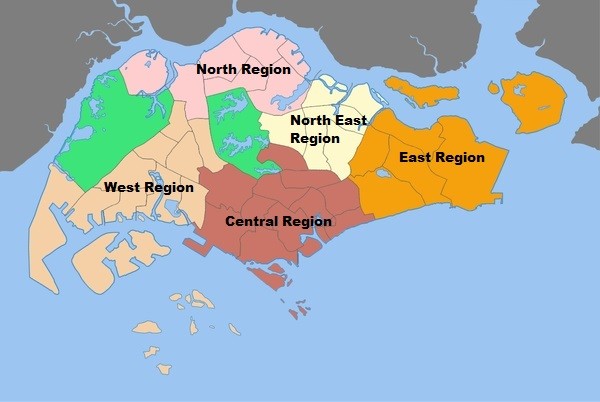From the above article (my emphasis in bold):
China’s outbound investment is surging from already-record levels, government data shows, as analysts suggest that the country’s booming clean energy technology sector is increasingly looking to set up manufacturing operations abroad in the face of US and EU tariffs.
Operations are moving overseas.
Climate Energy Finance (CEF), a Sydney-based research group, calculates Chinese companies have committed $109.2bn in outbound FDI across 130 clean technology transactions since the start of 2023, according to corporate announcements and financial statements.
As usual with anything to do with Chinese direct investments, the sums involved are massive.
Chinese leader Xi Jinping has sought to change the playbook by supporting advanced manufacturing, including next-generation and clean energy technologies, to boost growth in the world’s second-biggest economy.
As stated above, this constitutes a targeted approach to massively increase advanced manufacturing and clean energy technology whilst making a strategic decision to move away from investments into the property and infrastructure sectors.
So, we are talking about industries like electric vehicles and their batteries, battery-based energy storage systems, hydro, solar, wind and the electricity transmission such energy sources require. But why via foreign direct investment?
This part is important and is the fourth clue.
Not only is it a way to take market share of the huge supply chains such investments demand, but it speaks to a western world that today isn’t on friendly terms with China anymore.
The US and EU have accused Chinese manufacturers of expanding overseas in order to dodge tariffs in their markets. Tariffs, mind you, that both parties placed themselves. CEF noted that China’s overseas investment spree was driving new industrial hubs in countries including Thailand, Indonesia, Brazil, Hungary and Morocco.
The reason? Because manufactured goods in these countries are exempt from the worst of these tariffs. Regardless of their ultimate country of origin, in this case – China.
These economies of scale are making dramatic changes in the price of goods such as batteries and solar panels. In 2023 alone, both products have halved in price for domestic Chinese buyers.
This is one of several strategies that Chinese corporations are using to adapt to a hostile world around them.
An intensifying rivalry between China and the US-led west is driving a fragmentation in the world’s economic order.
Beijing, Washington, Brussels, and other capitals have imposed a range of tariffs, export controls, and other measures to protect their domestic markets and stymie competitors’ technological progress.
And thus, trade between these blocs has reduced, whilst the above-mentioned ‘connector‘ countries are seeking to insert themselves between them and are rapidly gaining importance and serving as a bridge.
That bridge of course is both the flow of trade and investment within each country and allowing Chinese companies to domicile in a new geographic area and repurpose their identity. To better fly below the worst of the flak between the US-led west and China.
And avoid their tariffs too.
Nowhere more has this behaviour been so obvious than in Singapore – hence the term “Singapore-Washing” that you may have heard of. It refers to renting out nondescript and low-profile apartment blocks to set up a subsidiary or reincorporate in the city state to mitigate the geopolitical risks and scrutiny often directed at China-based entities.
In return, business partners and potential investors will look at Singapore and see a respected jurisdiction providing a transparent pathway towards legal redress if things go wrong.
I ask you again; why do we let idiotic governments worldwide run the world like this on our supposed behalf?
The west made their opening shots. China has counter-attacked and appears to have successfully outflanked these initial attacks. This is very much consistent with the geopolitical conflict you’d expect at this stage of the Long Cycle.
The problem with these manoeuvres is that they invite reactions and new ways to inflict pain on the other side. This leads to further fragmentation in the global economy.
At a time – and here is when the 18.6-year Real Estate Cycle comes into play – when demand for goods remains high.
Have governments conquered inflation? They think so, given what they are doing with interest rates.
I am not sure about this. The peak of every 18.6-year Real Estate Cycle always involves inflation coming back into economies.
It is what governments then do to counteract this re-emergence of inflationary pressure that leads to the next economic collapse. You need to follow this emerging story carefully because it WILL affect your investment portfolio.
The key is in the timing. So where do you start? You won’t do better than to become our latest Boom Bust Bulletin (BBB) member. Together, we will research and cover all the latest news as it pertains to the remaining few years for the real estate cycle and this Long Cycle.
The BBB will guide you through the repeating history of the land markets, and by extension teach you its unique timing. It will introduce you to the basics of chart reading and show you how best to interpret what they are telling you and help you track the cycle even better.
We are entering a complex, multi-polar world now. The old order will not go quietly into the night.
This transition will not go smoothly. Enjoy the remaining few peak years of this current cycle.
But understand what’s at risk once boom turns to bust. Only once in the last hundred years has both a real estate cycle and Kondratieff wave peaked around the same time.
We walk through rarified air here. Profit but protect should be your motto. 99% of the market today do not understand what’s about to happen.
Please ensure you place you and your family on the right side of this trend.
Sign up now.






